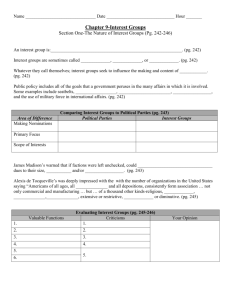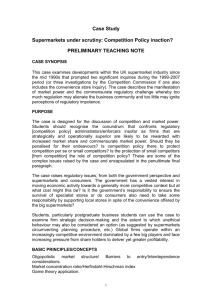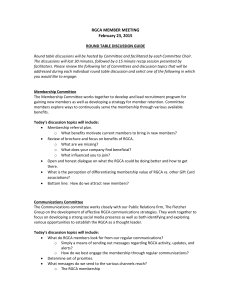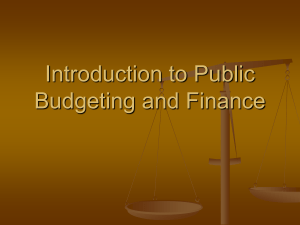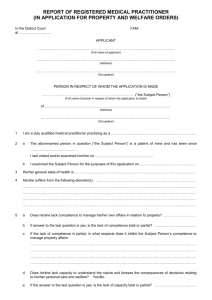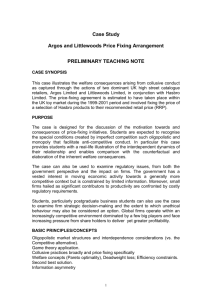12 Market / Government Failure
advertisement
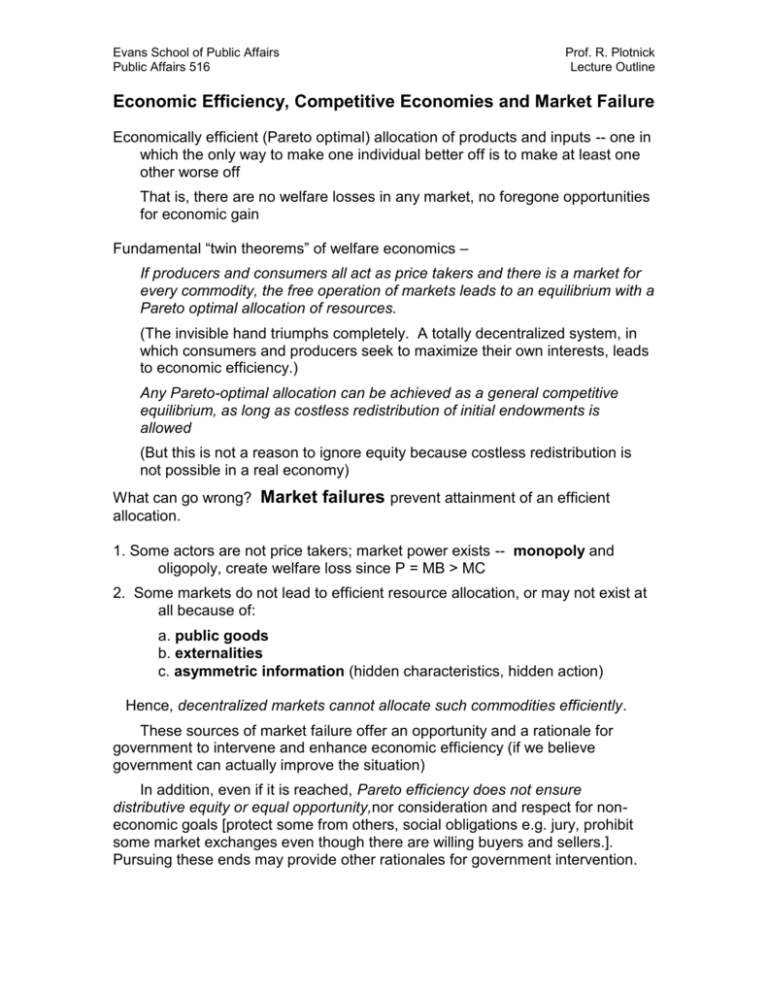
Evans School of Public Affairs Public Affairs 516 Prof. R. Plotnick Lecture Outline Economic Efficiency, Competitive Economies and Market Failure Economically efficient (Pareto optimal) allocation of products and inputs -- one in which the only way to make one individual better off is to make at least one other worse off That is, there are no welfare losses in any market, no foregone opportunities for economic gain Fundamental “twin theorems” of welfare economics – If producers and consumers all act as price takers and there is a market for every commodity, the free operation of markets leads to an equilibrium with a Pareto optimal allocation of resources. (The invisible hand triumphs completely. A totally decentralized system, in which consumers and producers seek to maximize their own interests, leads to economic efficiency.) Any Pareto-optimal allocation can be achieved as a general competitive equilibrium, as long as costless redistribution of initial endowments is allowed (But this is not a reason to ignore equity because costless redistribution is not possible in a real economy) What can go wrong? Market failures prevent attainment of an efficient allocation. 1. Some actors are not price takers; market power exists -- monopoly and oligopoly, create welfare loss since P = MB > MC 2. Some markets do not lead to efficient resource allocation, or may not exist at all because of: a. public goods b. externalities c. asymmetric information (hidden characteristics, hidden action) Hence, decentralized markets cannot allocate such commodities efficiently. These sources of market failure offer an opportunity and a rationale for government to intervene and enhance economic efficiency (if we believe government can actually improve the situation) In addition, even if it is reached, Pareto efficiency does not ensure distributive equity or equal opportunity,nor consideration and respect for noneconomic goals [protect some from others, social obligations e.g. jury, prohibit some market exchanges even though there are willing buyers and sellers.]. Pursuing these ends may provide other rationales for government intervention. Evans School of Public Affairs Public Affairs 516 Prof. R. Plotnick Lecture Outline Government economic intervention is called for if we think it can and will improve the situation, but that is not necessarily so because of: Government failures [theory less well developed than that for market failure] representative democracy – voting for constituency or conscience; self-interest and contributions from special interests; asymmetric information and rentseeking by concentrated interests [“capture”]; short time horizons; mediadriven agendas vs. careful assessment of options; public producers – principal-agent issues - agency interests vs. public interests; divergence of interests (inefficiency, less innovation) may be serious due to difficulty of valuing output, lack of competition or inflexibility from civil service After potential grounds for intervention are identified, a key task for economic policy analysts is to identify “institutional structures” that will better guide resource allocation. This framework offers a range of options or “policy tools” (“policy instruments”) for intervention: 1. Draw on allocative strengths of markets: deregulate privatize revise property rights, create new markets – auctions create new marketable goods – tradable permits 2. Taxes and subsidies to influence behavior 3. Establishing rules: civil law [especially liability, property and contract], criminal law, regulation of price, quantity/production method, and information disclosure; indirect provision of information via licenses, certification 4. Provide directly by government agencies, independent agencies, special districts, or contract out to for-profits and/or non-profits 5. Provide insurance [mandatory or subsidized] and other cushions for adverse events
